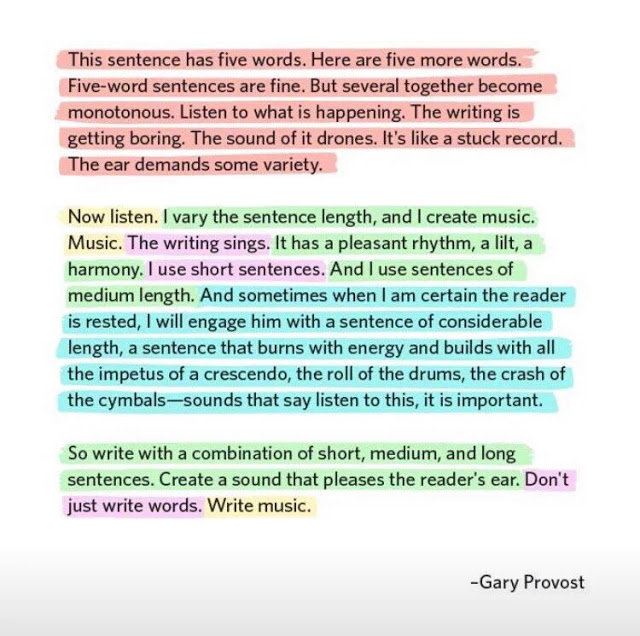Pacing your novel (or short story, for that matter) is a tricky skill to learn, but here are some helpful techniques and advice that I’ve found useful when writing my own novels. Here’s how to improve the pacing of your fiction writing.
As always—and like all things on the internet—this is just one person’s advice, so please don’t take it as gospel and make sure you keep the joy in writing!
Defining “pacing”
I should clarify that when I refer to ‘pacing’ in a work of fiction, I don’t mean writing a book that can be read as quickly as possible. This isn’t a race. But this is about retaining a reader’s attention. Captivating them to the point where everything else becomes noise.
Have you ever read a book that you just found impossible to put down? You just had to read one more chapter, even though your eyelids were heavy and you ran the risk of the book flopping down onto your face? That’s because the story had perfect pacing. Great pacing will keep a reader turning those pages and will have them engaged from start to finish.
Here are my top tips for how to pace your novel effectively.
Have a plan, but don’t be rigid
I touched on this in my top tips for writing a first draft, but it’s worth repeating here: if you are (like me) a writer who likes to plan out your novel, just be mindful of sticking too closely to it.
Sometimes your original plan can actually make the story stodgy, or it can introduce things that simply don’t need to be there. Being flexible is key. This is why I don’t like my outlines/plans to be too detailed, because it gives me ample wiggle-room to change things up, depending on what feels more natural.
Reduce exposition
This is similar to the “show don’t tell” advice you’ve probably heard already – but the last thing your reader needs is six pages detailing the history of your fictional universe. Worse still, you don’t want to have a character who simply explains what’s happening in their dialogue. It feels wooden and disrupts the flow of how a story should be told.
This doesn’t mean you should have zero exposition, but you need to be on the lookout for info-dumping or clunky explanations.
Read dialogue aloud
Another oft-repeated piece of advice, but that’s probably because it’s actually really valuable! If you read your dialogue aloud and it sounds forced or unnatural, then be aware that it can kill the pacing of your writing.
Awkward, unwieldy dialogue can break a reader’s immersion in your story. And a break like that feels like a pause in the narrative. That’s how poorly written dialogue can wreck a novel’s pacing. So read it aloud and be sure to fix anything that feels out of place.
Try “Yes, but…” or “No, and…”
Full disclosure, I stole this one from a podcast snippet I heard (can’t remember the source or I would credit it, sorry!)
This is a technique that dungeon masters use in D&D, as it keeps narrative tension as players work their way through each challenge put in front of them. Essentially, you try to resolve every scene with one of these two phrases: “Yes, but…” or “No, and…”
So, if your characters need to cross a river to continue their quest, you could retain narrative tension in one of two ways:
- Yes, they successfully cross the river, but the fast-moving current washes away their supplies
- No, they aren’t successful, and now the river is full of crocodiles
This won’t be applicable to every scene in your novel, but it’s a great technique for ramping up tension throughout the duration of your entire story.
Try the internal/external development model
Another technique that I read about elsewhere (but also can’t remember the source, sorry again!) – this one revolves around development within your story.
Specifically, this relates to the development of two areas: internal and external development. Internal being character development and external relating to the plot.
When I finish writing a chapter, I find it really useful to ask myself these two questions:
- Internal – How has this chapter changed the characters involved? What has the reader seen that affects how they view those characters?
- External – How has the plot developed? Outside of character arcs, what has progressed in the storyline?
If I don’t have robust, justifiable and effective answers to both of these questions, then the chances are high that the chapter is more filler than killer. This can impact the pacing of the novel, or even stall a reader’s enjoyment altogether!
Check your cadence
Cadence refers to the rhythm or flow of your writing. Great writers understand the need to vary it, depending on the situation.
Fast-paced action sequences benefit from short, sharp, staccato statements. Whereas more drawn-out, tension-inducing sequences might need a longer, more languid approach to language and structure.
This image shows the perfect example of this in practice, from Gary Provost. It’s been doing the rounds on the ‘net for years, but it’s 100% worth showing again here.
The sign-off is better than any advice I could give you: Don’t just write words. Write music.

Be ruthless with your editing
Final tip from me is this: don’t be afraid to kill your darlings.
Writing a draft is one thing, but editing and refining it is a different beast altogether. If your pacing is off in your first draft then that’s not the end of the world, it can be fixed. But the important thing is that you do attempt to fix it.
Your editor or your test readers will be your biggest resource here, so listen to their feedback and act on it. The buzz-phrases that you’re looking out for are “this part took a bit long” or “this character seemed to change quite suddenly” – it can also manifest as “this feels over-described” or “this needs a bit more build-up”.
Whatever the warning signs are, heed them and do what you can to fix the underlying issues. This will improve your pacing, and your writing will be infinitely better for it.
📚✌🏻SP
Share this post
Steve Pannett is an author and designer based in Yorkshire, UK.
He writes primarily in the fantasy genre, combining character-led storytelling with epic, gritty world-building to create dark tales with plenty of action and lots of twists along the way.
He has self-published multiple books and is active online.


